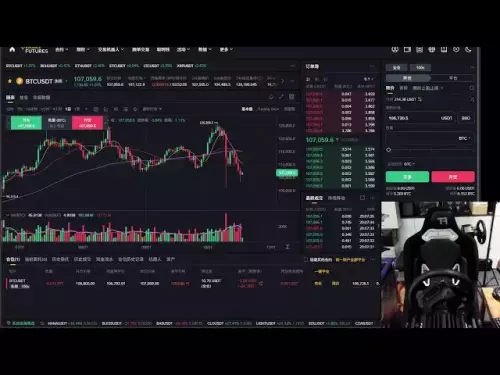 |
|
 |
|
 |
|
 |
|
 |
|
 |
|
 |
|
 |
|
 |
|
 |
|
 |
|
 |
|
 |
|
 |
|
 |
|
Cryptocurrency News Articles
Chainlink vs. XRP: Decoding the Real Value Proposition
Oct 17, 2025 at 12:30 am
A deep dive into Chainlink (LINK) and XRP (XRP), comparing their utility, adoption, and future potential in the evolving landscape of crypto and traditional finance.

Chainlink vs. XRP: Decoding the Real Value Proposition
In the whirlwind world of crypto, discerning genuine value from hype can feel like navigating a minefield. Chainlink (LINK) and XRP (XRP) are two names that frequently pop up, each with its own story and promise. Let's break down what makes them tick and which one might have the edge.
XRP: The Cross-Border Payments Play
XRP, powered by Ripple, aims to revolutionize cross-border payments. The idea? Use XRP as a bridge currency, connecting different national currencies for faster and cheaper global transactions. Sounds slick, right?
The catch? It hinges on institutional adoption. Banks and financial companies need to hop on the XRPL bandwagon or actually use XRP for settlements. While Ripple has snagged partnerships with names like Santander and SBI, most stick to RippleNet’s fiat-based rails instead of XRP itself. Regulatory uncertainty and integration costs have made banks hesitant, often preferring stablecoins or private blockchain solutions.
While regulation is no longer the main obstacle, the real challenge for XRP is proving its tech offers a clear advantage over existing solutions. It needs to show it brings something unique to the table.
Chainlink: The Universal Interoperability Layer
Enter Chainlink, a project that's been quietly building serious infrastructure. Chainlink's tech, particularly its Cross-Chain Interoperability Protocol (CCIP), is actively bridging the gap between traditional finance (TradFi) and the crypto ecosystem. Its integration with SWIFT, the interbank messaging system, is a big deal.
Chainlink has partnered with SWIFT to connect traditional and digital assets. SWIFT is using Chainlink’s CCIP as a proof-of-concept, enabling SWIFT messages to instruct on-chain token transfers, making the SWIFT network interoperable across various blockchain environments. This is about making different systems talk to each other, creating a more efficient capital markets ecosystem.
StableX's Bet on Chainlink
StableX Technologies recently made a significant move by acquiring Chainlink. This acquisition underscores Chainlink's pivotal role in the decentralized finance (DeFi) space, particularly for stablecoins. StableX sees Chainlink as essential for the growth of the stablecoin economy, powering critical functions like price feeds and proof-of-reserve.
James Altucher at StableX believes Chainlink is uniquely positioned to benefit from the growth of the stablecoin industry. With partnerships spanning from Swift to UBS and the U.S. Department of Commerce, Chainlink is becoming the data backbone for both decentralized and traditional finance.
The Verdict: Utility Trumps Hype?
While XRP has shown some price gains, Chainlink appears stronger as a project, because it has more comprehensive use cases. Its technology powers key infrastructure for both crypto and traditional finance, including SWIFT integration and institutional data flows. Chainlink’s role as a universal interoperability layer gives it broader, long-term utility, while XRP’s success still hinges on more widespread institutional adoption.
Final Thoughts: What's Next?
In the end, choosing between Chainlink and XRP depends on your investment style. Chainlink is the steady builder, quietly powering the future of finance. XRP is the ambitious disruptor, aiming to overhaul cross-border payments. Either way, the crypto landscape is always evolving, so buckle up and enjoy the ride!
Disclaimer:info@kdj.com
The information provided is not trading advice. kdj.com does not assume any responsibility for any investments made based on the information provided in this article. Cryptocurrencies are highly volatile and it is highly recommended that you invest with caution after thorough research!
If you believe that the content used on this website infringes your copyright, please contact us immediately (info@kdj.com) and we will delete it promptly.



















![[4K 60fps] Astral by oc3andark (1 Coin) [4K 60fps] Astral by oc3andark (1 Coin)](/uploads/2025/10/19/cryptocurrencies-news/videos/k-fps-astral-ocandark-coin/68f438453fa33_image_500_375.webp)










































